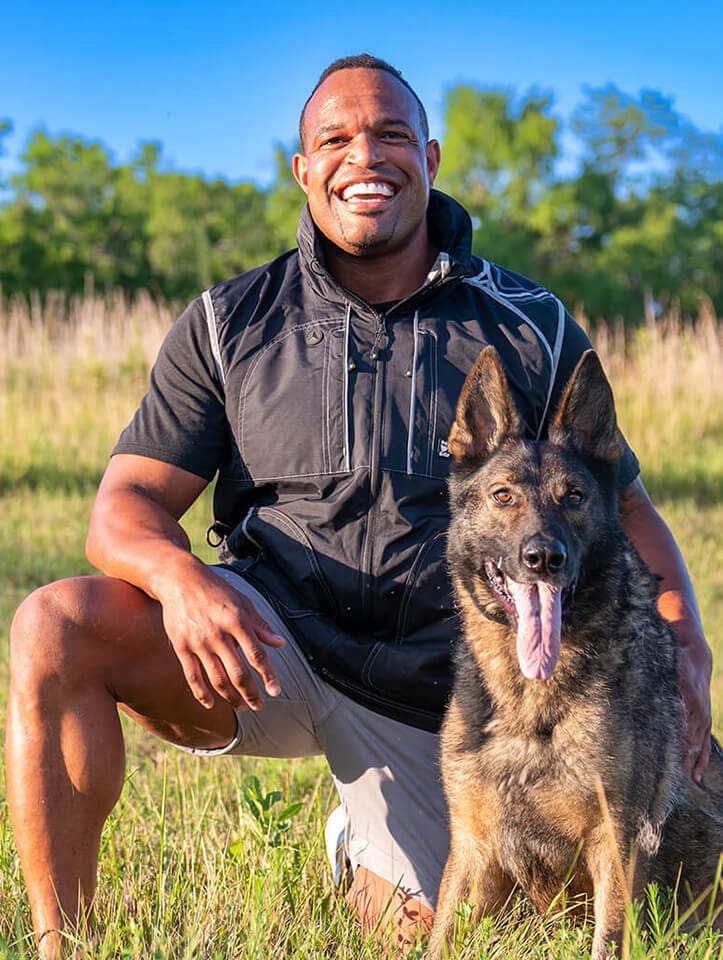Effective Dog training strategies for well-behaved dogs.
Effective Dog training strategies for well-behaved dogs.
Blog Article
Master Essential Commands: Effective Canine Training Made Easy
Effective canine training is a fundamental facet of liable pet possession, and mastering crucial commands offers as the foundation for a harmonious relationship between handler and dog. Understanding the nuances of canine actions and the training process is key; nonetheless, the journey to a well-trained pet frequently presents unforeseen difficulties that need focus.
Comprehending Your Dog's Habits
To grasp the nuances of reliable pet training, it is important to damage down and evaluate your pet's behavior. Dog training. Understanding the inspirations behind your dog's actions is important; habits can come from instinct, concern, excitement, or a desire for interest. By observing your canine in various situations, you can identify patterns that might show underlying feelings or needs
As an example, a pet dog that barks exceedingly might be expressing monotony, anxiousness, or a demand for social communication. Alternatively, a pet dog that exhibits destructive behaviors could be seeking excitement or remedy for stress. Recognizing these triggers allows you to customize your training strategy effectively.
Furthermore, it is crucial to take into consideration the pet's breed features, as they can influence habits considerably. Some types are predisposed to certain traits, such as herding or guarding reactions, which can influence their reactions to certain stimulations.
Last but not least, consistency in your actions to your dog's behavior promotes a much better understanding between you and your family pet. This common comprehension is foundational for developing trust fund and facilitating an effective training process that nurtures both behavior correction and favorable reinforcement.
Crucial Commands to Educate
Teaching necessary commands is a basic aspect of effective pet dog training, giving the foundation for a mannerly and responsive pet. These commands not just boost communication between the owner and the canine but additionally make certain security in numerous environments.
The most important commands consist of "Sit," which urges your pet to continue to be fixed and tranquil; "Keep," which strengthens the idea of staying in one place until launched; and "Come," which is important for recalling your pet dog from potentially unsafe situations. "Down" teaches canines to lie down, advertising leisure and control, while "Leave it" helps stop pets from grabbing dangerous or undesirable items.
" Heel" is an additional important command that urges your dog to stroll very closely beside you, enhancing chain good manners. Last but not least, "No" serves as an important boundary-setting command, assisting to fix unwanted actions.
Training Strategies for Success
Reliable dog training counts heavily on employing a selection of methods that cater to both the pet's discovering style and the proprietor's training goals. One crucial technique declares reinforcement, which includes rewarding desired actions with deals with, praise, or play. This approach encourages the pet to repeat those behaviors, promoting a solid bond between proprietor and family pet.

Another reliable strategy is clicker training, where an unique sound, made by a clicker, notes the specific minute a pet dog carries out a preferred action. This specific timing helps dogs link the actions with the reward, boosting their understanding.
Consistency is vital in all training techniques. Establishing clear commands and preserving the same hints assists the pet dog grasp assumptions much more rapidly. Additionally, short, interesting training sessions stop dullness and boost retention.
Including socialization possibilities is likewise essential. Exposing pets to different environments, people, and other pets assists them develop self-confidence and flexibility.
Last but not least, perseverance plays a significant duty in effective training - Dog training. Each canine discovers at their own rate, and comprehending this can result in a much more satisfying training experience for both the owner and the canine. Carrying out these methods will establish the foundation for efficient pet training
Usual Challenges and Solutions
Despite the most effective training strategies, pet dog owners commonly experience typical difficulties that can prevent development. One common problem is incongruity in commands and cues. When family members use different commands for the very same actions, it puzzles the pet dog, bring go to my site about inconsistent feedbacks. The option hinges on developing a unified method amongst all web household participants, making sure that everybody uses the very same terms and signals.

Furthermore, some pet dogs may display stubbornness or lack inspiration. This can usually be resolved by integrating positive support methods, such as deals with or praise, to motivate wanted behaviors. Customizing incentives to what your pet dog locates most motivating can considerably improve their engagement.
Finally, anxiety or anxiousness can hamper progress in training. Identifying signs of stress and readjusting the training pace as necessary is critical. Utilizing steady exposure to feared stimuli can aid develop confidence over time, assisting in a more efficient training experience.
Preserving Consistency and Persistence
Consistency and perseverance are critical in pet dog training, as they form the foundation for attaining long lasting behavioral modifications. Pet dogs flourish on regular and clear assumptions; therefore, preserving a regular technique in commands, benefits, and corrections is essential.
Just as important is the duty of patience. Educating a dog is not an instantaneous process; it requires time and repetition. Pet dogs, a lot like humans, have varying finding out rates and may not understand commands right away. Fitness blog here instructors should identify this and continue to be calm, offering support as opposed to irritation. Positive reinforcement plays a crucial duty below, rewarding preferred habits and assisting to promote a trusting connection in between the pet dog and instructor.
Final Thought
Mastering important commands is fundamental to effective pet dog training, fostering improved interaction and enhancing favorable habits. The application of positive reinforcement strategies, coupled with consistency and persistence, substantially enhances the training experience for both the pet dog and handler. Addressing usual difficulties with practical services additionally supports the training procedure. Eventually, a trained dog not only shows great habits yet additionally establishes self-confidence, contributing to a harmonious partnership between the pet and its owner.
Report this page